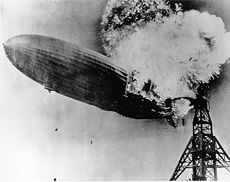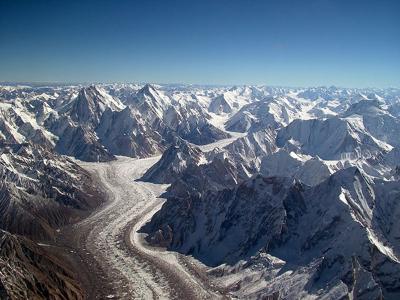- Air Homepage
- Employment
- Disaster Recovery Plan Example
Here's a comprehensive transportation disaster recovery plan example
Search for more about pollution.
Here's a transportation disaster recovery plan example. It gives environmental health and safety departments something to think about. There are concrete solutions that can be followed and a blueprint for policy making.
Managing transportation and environmental health crises effectively requires a robust disaster recovery plan. You can equip yourself with the knowledge and tools needed to respond swiftly and efficiently by exploring real-world examples of plane crashes and understanding air quality dispersion modelling. Stay informed and prepared with this guide so you can protect public health and the environment.
Averting the Environmental Health Crisis with a Blueprint.
Here, you can...
- Explore a real-world disaster recovery plan centered around transportation and environmental health.
- Get concrete solutions and policy blueprints from Toronto's plane crash.
- Find out how air quality dispersion modeling can be a game-changer in emergency response.
- Discover essential insights and expert resources to make sure your disaster recovery plan works.
- Check out more disaster recovery plan examples and resources.
- Get in-depth information and expert advice by clicking the links.
Toronto, a Canadian city, had a plane crash earlier this century. Ontario's environment ministry was supposed to deal with the incident's ecological implications. It was a big environmental issue in Canada.
What kind of environmental research does the transportation sector need? In emergency situations, they need a quick response. The plan has to be broad enough to handle the wide variety of incidents that can happen and detailed enough to solve them.
Accidental releases and Air Quality
Air quality can be impacted by incidents, even if they're temporary. Air quality dispersion modelling can tell insurance companies what the potential impacts of an event (e.g., a fire) might be. Is there a connection between disasters and air quality dispersion modelling?
There are other reasons why air quality dispersion modeling is important in disasters. Fires, chemical releases, and explosions can release harmful pollutants into the air, which can have a significant impact on public health and the environment. To help emergency responders better understand the potential risks and take appropriate measures to protect the public health, air quality modeling can help predict how these pollutants will disperse and spread through the atmosphere.
Second, air quality dispersion modeling can help identify the areas most at risk from hazardous pollutants, so emergency responders can prioritize their efforts and allocate resources more efficiently. Those who are most vulnerable, like kids, the elderly, and people with pre-existing respiratory conditions, can be protected.
Last but not least, air quality dispersion modeling can inform evacuation and shelter-in-place decisions. Emergency responders can make informed decisions about when and where to evacuate people, or when it's safe for them to stay at home or work, with accurate information about the movement and spread of hazardous pollutants.
Try this specialty consulting firm in Calgary named Calvin Consulting Group Ltd.
Our goal is to find quick solutions that eliminate the problem efficiently to the satisfaction of:
- the public
- Natural resources, environment, or affected and related government ministries.
Public should be informed about natural resources and the environment, because they have a right to know how the government is managing them. To make sure the public knows about any changes or decisions made in these areas, the appropriate government ministry should make this information available.
The ministry should consult the public on all issues related to the project, including environmental impacts, and take their views and concerns into account. In addition, the ministry should make all relevant information public and keep all stakeholders updated. Last but not least, the ministry should be transparent and accountable to the public.
Research consultants help officials assign the right technology and workers to fix the problem. Environmental consultants like us will often be part of a deployed group if the environment is impacted. For instance, Calvin Consulting is often requested to provide modelling and information to engineering companies who design emergency flare stacks, in case something goes wrong.
More disaster recovery plan examples
It's even easier to forecast the weather than an emergency. Have you heard the saying, An ounce of prevention is worth a pound of cure? It's especially good for disaster recovery plans for the transportation industry. That ounce includes due diligence, audits, compliance, rules and regulations. When an accident happens, you have to act fast. I hope you've done some pre-planning.
Need a gasoline MSDS, relief from carbon monoxide poisoning symptoms, or help with other air health quality issues? The right consulting company can get your disaster recovery plan example started right away. Make sure you read this before you see any bad press or pessimistic articles about the environment.
In disasters, air quality dispersion modeling can help emergency responders make informed decisions that can save lives. Pre-emptively planning evacuation routes using air quality dispersion modeling helps identify areas most affected by pollution. You can also use it to figure out which areas are safe to re-enter after a disaster. So responders can make sure they're helping those in need the most efficiently and effectively.
In the event of a nuclear accident, the modeling can help predict the spread of radiation in the atmosphere, allowing responders to take precautions. Using air quality dispersion models, emergency responders can predict the movement of airborne pollutants and toxins by taking wind speed and direction, humidity, and temperature into account. Information like this helps them decide where to send aid, where to evacuate, and other important stuff.
Here's some more reading:
Check out this disaster recovery resource site. Hundreds of articles, newsletters and thousands of links ALL FREE in one easy to use location. You can use stuffintheair.com to research weather and environmental issues.
Looking for a job in the environment? Check out the Environmental Health and Safety Jobs page for help in finding some good ones.
Search this site for more information now.
Transportation and Environmental Health Disaster Recovery Guide
This article illustrates the importance of air quality dispersion modeling in a transportation disaster recovery plan. Real-world scenarios, like Toronto's plane crash, are discussed along with concrete solutions and policy blueprints. This is a must-read for anyone involved in disaster recovery planning.
Do you have concerns about air pollution in your area??
Perhaps modelling air pollution will provide the answers to your question.
That is what I do on a full-time basis. Find out if it is necessary for your project.
Have your Say...
on the StuffintheAir facebook page
Other topics listed in these guides:
The Stuff-in-the-Air Site Map
And,
Thank you to my research and writing assistants, ChatGPT and WordTune, as well as Wombo and others for the images.
GPT-4, OpenAI's large-scale language generation model (and others provided by Google and Meta), helped generate this text. As soon as draft language is generated, the author reviews, edits, and revises it to their own liking and is responsible for the content.





New! Comments
Do you like what you see here? Please let us know in the box below.